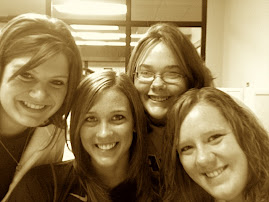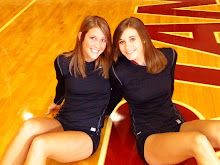Thursday, November 12, 2009
MLK Jr. && Malcolm X
I.Pastor in Alabama
II.Civil rights activists voted King as their leader
III.“I Have a Dream” speech in 1963
IV.Worked for Civil Rights Act
V.Congress passed Civil Rights in 1964
VI.King received Nobel Peace Prize
VII.Killed by assassin’s bullet on April 4th
Malcolm X; 1925-1965
I.Was in prison 1946-1952 for burglary
II.Converted to Muslim-“Black Muslim”
III.Believed in black separatism
IV.Took the name “X” as a replacement for his lost African name
V.In rivalry between Malcolm X and Nation of Islam because of disagreement with Elijah Muhammad, the Nation of Islam leader
VI.Shot February 21 by Islam’s
Protect Ourselves
-->Malcolm X
-->X believes in talking face to face rather than doing something constructive for the benefit of the people
-->X also believes negroes should be allowed to have guns for protection
-->X questions if government and FBI respects negroes
-->Also believes negroes should form vigilante committees for protection of lives and community
Stride Toward Freedom
-Life of oppressed; they adjust by being silent
-To accept passively is unjust
-Religion reminds everyone of their rights; moral ways
-Can adjust by being violent
-Violence never brings permant peace; it solves no social problems but creates new
-Violence to achieve racial justice is impractical and immoral (emphasizes hate rather -than love); seeks to humiliate opponent rather than win his understanding
-Violence ends up by defeating itself; creates bitterness
-Or, to adjust, nonviolent resistance; reconcile truths of two opposites
-With nonviolent resistance, no individual or group need submit to any wrong, nor resort to violence in order to right a wrong
-Not black vs. white but justice vs. injustice
Ballad of Birmingham
..A little girl asks her mother if she can go and play on the streets of Birmingham.
..Mother says no, but lets her little girl go to church because she figures that is a safe place.
..While the girl is gone, the mother hears an explosion and runs to the church.
..Some white person blew up the church.
..As the woman is looking for her little girl, she finds her shoe.
Ballad: Narrative poem that was originally meant to be sung.
A Murder, a mystery, and a Marriage
Mark Twain
Chapter One:
You meet John Gray, farmer in Deerlick, Missouri.
He is bitter and needs money.
You meet Rev. John Hurley.
You meet Mary Gray, John’s daughter who is in love with Hugh Gregory.
You meet Sarah/Sally, John’s wife, mother of Mary.
You meet Tom Gray, Mary’s brother.
Dave, John Gray’s brother, who is very rich, hates Hugh.
Hugh stopped Dave from stealing his father’s farm.
Chapter Two:
Rev. brings news that Dave left his whole will to Mary.
John doesn’t want Mary to marry Hugh.
John runs off and finds a stranger lying in the snow, he takes him home.
Chapter Three:
Stranger is a teacher of language, music & many more topics.
He calls himself Mr. George Wayne.
He tells Sally he is a Frenchman, him and his father are lords. Mr. Wayne is rich. He had to leave his country or he would have had to marry a woman but he wanted to marry for only love. Mr. Wayne likes Mary. His real name is Count Hubert Dee Fountingblow.
Chapter Four:
Count and Dave talk about marriage.
Count finds a letter on Dave’s desk.
Count finds Mary crying about Hugh.
Chapter Five:
Hugh and Dave fight.
Dave threatens him.
Chapter Six:
Count was at Grey’s house when they found out that Dave has been killed.
They believe Hugh is the killer.
There is blood on Hugh.
The fight, will and debtall signs point to Hugh.
Hugh is going to be hung.
Chapter Seven:
Mary loves Hugh.
People are upset Hugh is being hung.
They keep waiting for his innocence to be proclaimed.
As Hugh is being hung, Count and Mary are getting married.
Police interrupt marriage and take Count away, Hugh is free.
John yells for Hugh and Mary to get married.
Count’s assassin spills beans that he and Count killed Dave.
Chapter Eight:
Jean Merciere is the real Count.
He is completely self taught.
Met a man named Verne who would tweak Count’s stories from his travels and make them magnificent.
Verne was a fraud.
He used Count for stories as he paid him.
Verne forced Count to have murderous thoughts.
Count wanted both of them to get hurt.
One story, Verne and Count are in a balloon and Count pushes Verne out.
Count floats to John’s pasture and ends up there.
Monday, November 9, 2009
Coming of Age in Mississippi
- 1963-NAACP boy-cots
- Anne goes door to door for NAACP which is ran by John Salter
- She is also spokeswoman for a group that did sit-in at Woolworth's lunch counter with two others
- They could possibly go to jail for doing so
- The waitress told them that blacks are served in the back, but the three refused to move
- The white people in the restaurant started to leave because of the blacks
- Newsmen came in-soon whites followed
- They tired to put ropes around the Negro's necks
- The women prayed, and all hell broke loose
- One white man beat up Anne's friend Memphis
- Memphis was arrested for being accused as the attacker
- Crowds chanted "communists"
- One old man told the white boys to remove the blacks
- White men carried Joan and Annie; both escaped their grips and crawled back to the counter
- A college faculty member of Tougaloo (where blacks went) sat down with them
- Now it was 2 whites & 2 blacks sitting at the counter
- The whites threw mustard, ketchup, and other things at them
- John came and sat with them, he got hit in the jaw with a brass knuckle and salt poured on his wound
- One end of the counter, Lois & Pearlena were joined by George Raymond, worked for CORE (Congress of Racial Equality) & also a black high schooler
- The mob sprayed them with paint and wrote nigger on the high-schooler's back
- Finally the store owner closed down the store because of all the damage it was causing
- About 90 police men watched this happen, police wouldn't even escort the black protesters out
- As they walked out, police allowed people to throw anything at them
- Reverend King picked them up and took them back to the NAACP office
- Before they returned, Anne wanted to have her hair washed, they went to a hair dresser & she gladly cleaned Anne's hair for her
- The hair dresser accepted her before 3 other white ladies, who were very kind and knew Anne needed help
- At the church that night, people honored and applauded the ones who did the sit-in
- It was just the beginning- "We shall overcome."
Declaration of Independence
1. Why do they repeat it?
Show more emphasis, they are talking about the King of England.
2. Why do they make it personal?
It is a very personal matter. People were driven away from where they came from to the United States to recieve the rights and respect that Americans do.
3. How does the D.I. anticipate its audiences resistance to change?
The declaration clearly shows that freedom is what the people wanted. They would have done anything to earn rights.
4. How does the D.I. use parallelism? How does it impact the effectiveness of the piece?
Everything is clearly stated and is all in the same form. It makes it easier to get the full message from the piece.
parallelism: when a writer uses similar grammatical forms or sentence patterns to express ideas of equal importance.
5.What to you is the most convincing example stated in the D.I.? Why?
"He has erected a multitude of new offices, and sent hither swarms of officers to harass our people, and eat out their substance."
People were being contained by the same law that they were trying to escape. They came from England to American to escape that law, but ended up finding the same senario.

